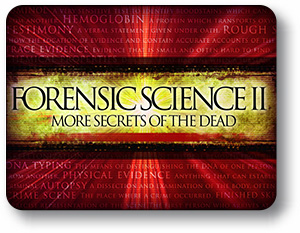
Although the crime scene represents the first step in solving crimes through forensic science, the crime laboratory plays a critical role in the analysis of evidence. This course focuses on the analysis of evidence and testing that takes place within this setting. We will examine some of the basic scientific principles and knowledge that guides forensic laboratory processes, such as those testing DNA, toxicology, and material analysis. Techniques such as microscopy, chromatography, odontology, entomology, mineralogy, and spectroscopy will be examined.
Unit 1: Drug Evidence
The illegal drug trade is a major concern within North America for law enforcement and the criminal justice system. Forensic scientists play an important role in investigating and solving drug cases. Not only do they determine whether illegal drugs are present at a crime scene, but they also identify drugs and determine how they were used. In this unit, we will examine types of illegal drugs that forensic scientists often deal with and learn about some of the laboratory tests that are used to identify drugs.
What will you learn in this unit?
Unit 2: Forensic Toxicology
Arsenic, cyanide, and strychnine have all been used to harm individuals throughout the course of history. Although poisoning may not be the most common way of trying to kill someone, it does happen, and forensic scientists play an important role in determining what has occurred. In this unit, we will explore some of the poisonous substances that exist and how forensic scientists test for and identify poisons.
What will you learn in this unit?
Unit 3: Forgeries and Document Examination
During crime investigations, forensic scientists may be called upon to determine whether a paper, signature, or other document is authentic or whether it is fake. In this unit, we will examine the area of document examination. Document examination may include comparing the handwriting of several samples, linking documents to the particular machines that created them, and identifying counterfeit papers and money. We will discuss some of the aspects that document examiners look for in comparing documents and some of the techniques they use to find alterations in documents.
What will you learn in this unit?
Unit 4: Paint, Soil, and Other Trace Evidence
Trace evidence left at a crime scene can yield important clues about the victim, perpetrator, and the crime. In this unit, we will examine some of the trace forms of evidence that forensic scientists may use to solve crimes. These may include paint chips, pieces of metal, soil, and so on. We will examine some of the techniques that forensic scientists use to identify and compare these pieces of evidence.
What will you learn in this unit?
Unit 5: Forensic Entomology
In some criminal investigations, forensic scientists examine insects and other arthropods. In this unit, we will explore the area of forensic entomology and its use in criminal investigations. We will learn about the history of forensic entomology and the types of insects commonly encountered in crime investigations. We will also examine some of the tests and techniques used to study the insects.
What will you learn in this unit?
Unit 6: Forensic Anthropology
Bodies, bones, and teeth can provide investigators with important information about how someone died. In this unit, we will explore the areas of forensic anthropology and facial reconstruction. We will consider some of the clues that forensic scientists look for when examining bodies and skeletons.
What will you learn in this unit?
Unit 7: Digital Evidence
Digital devices play an important role not only in our daily lives, but also in criminal investigation. In this unit, we will learn about the evidence that can be gained from computers and other devices. We will consider how information can be retrieved from devices, and how digital evidence should be preserved.
What will you learn in this unit?
Unit 8: The Future of Forensic Science
As technology has changed and advanced, so has forensic science. In this unit, we will consider a few of the new techniques that are being used in forensic investigations. We will learn more about databases that forensic scientists use in their work. We will also examine challenges in forensic science and what the future of forensic science may hold.
What will you learn in this unit?
